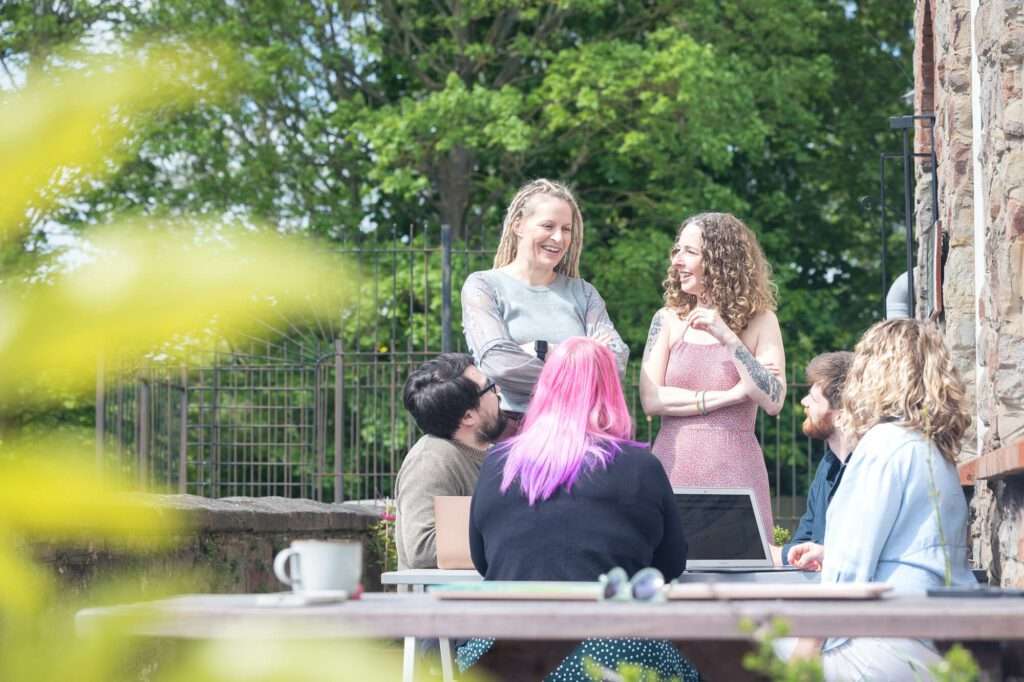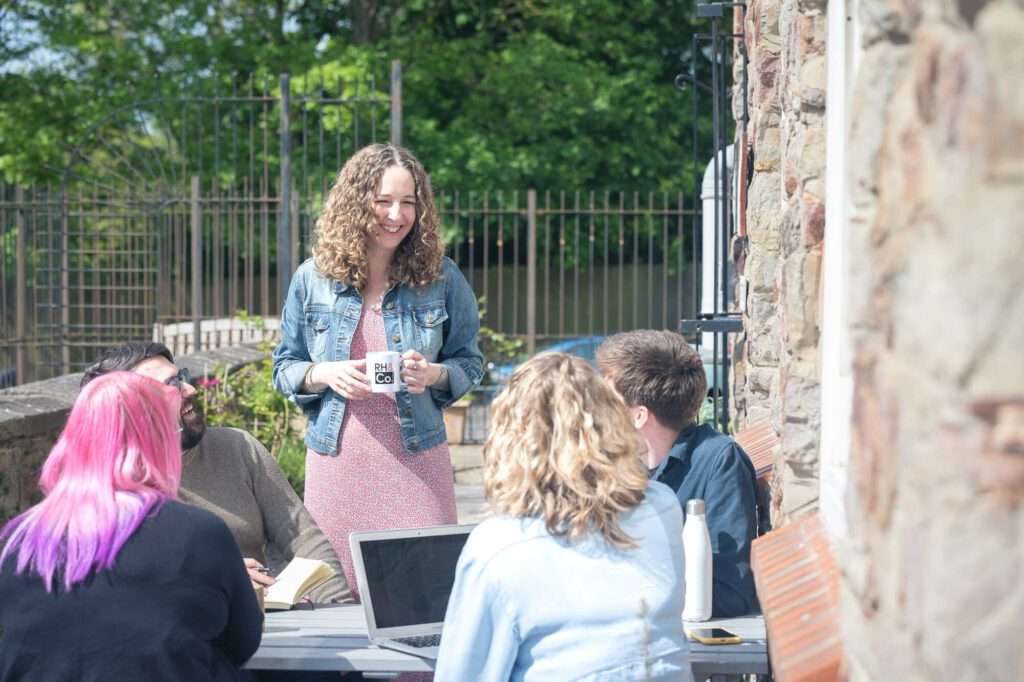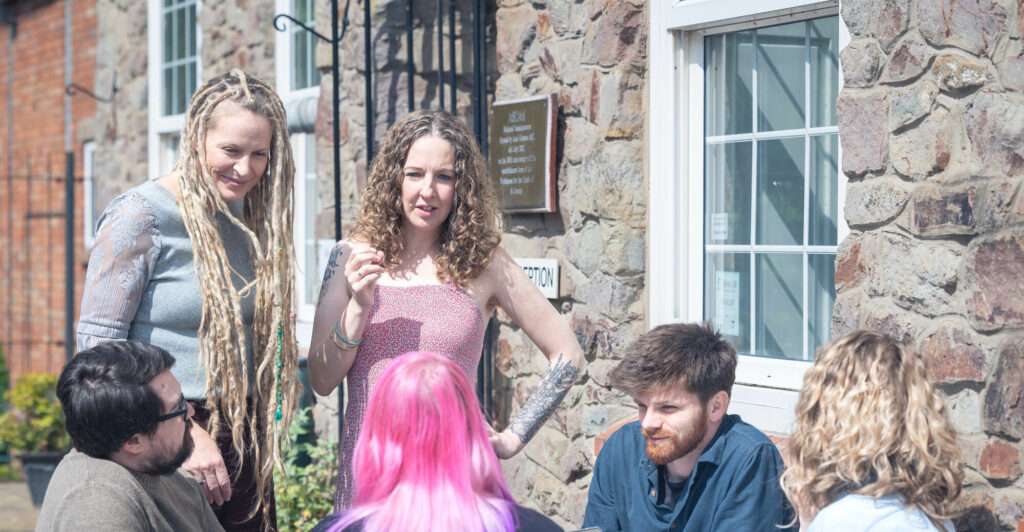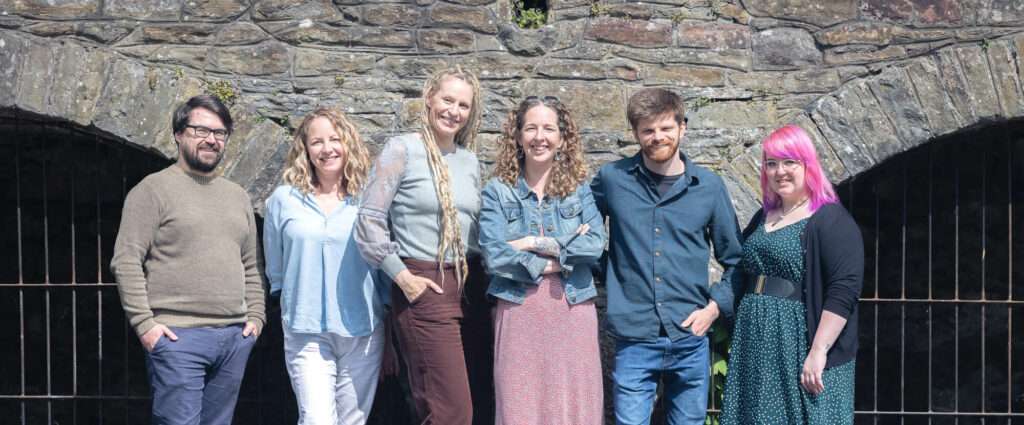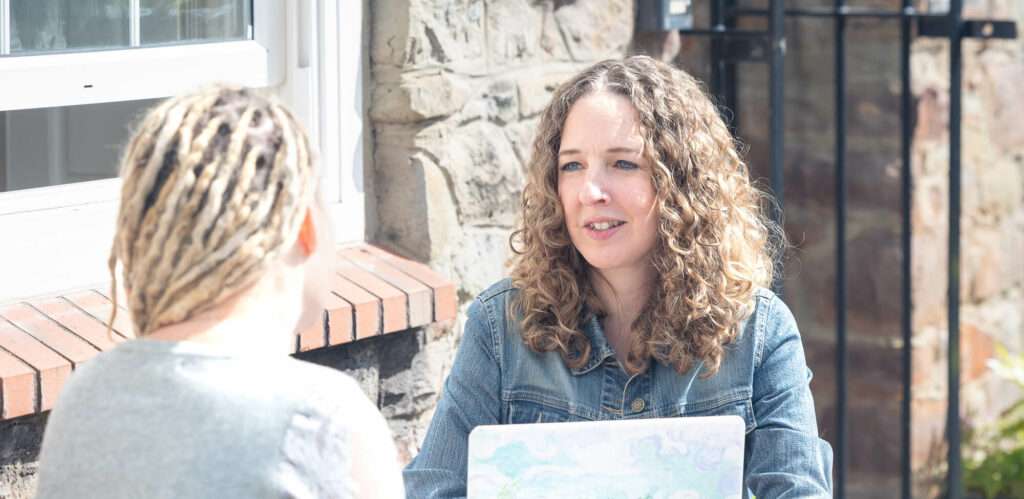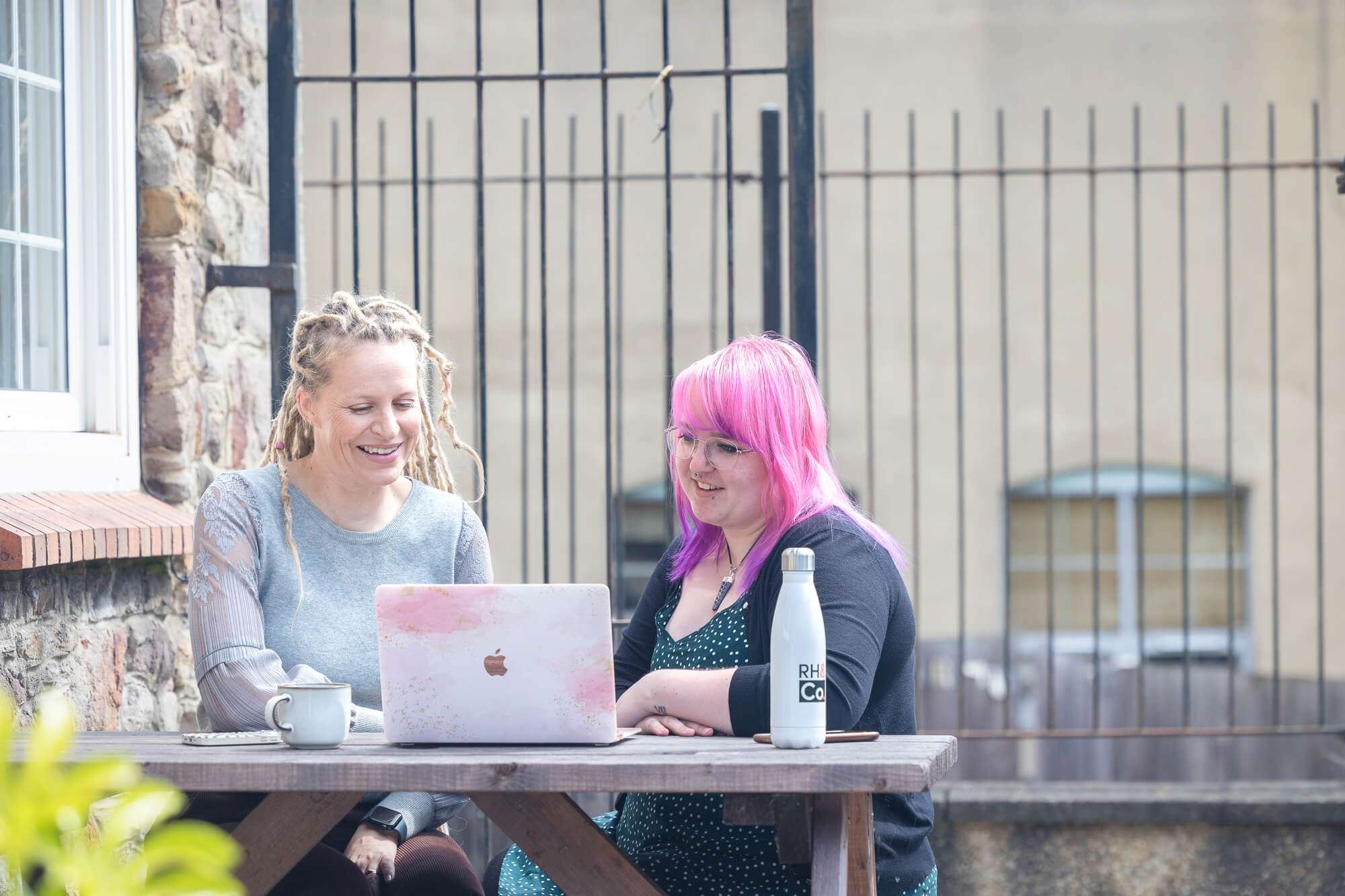
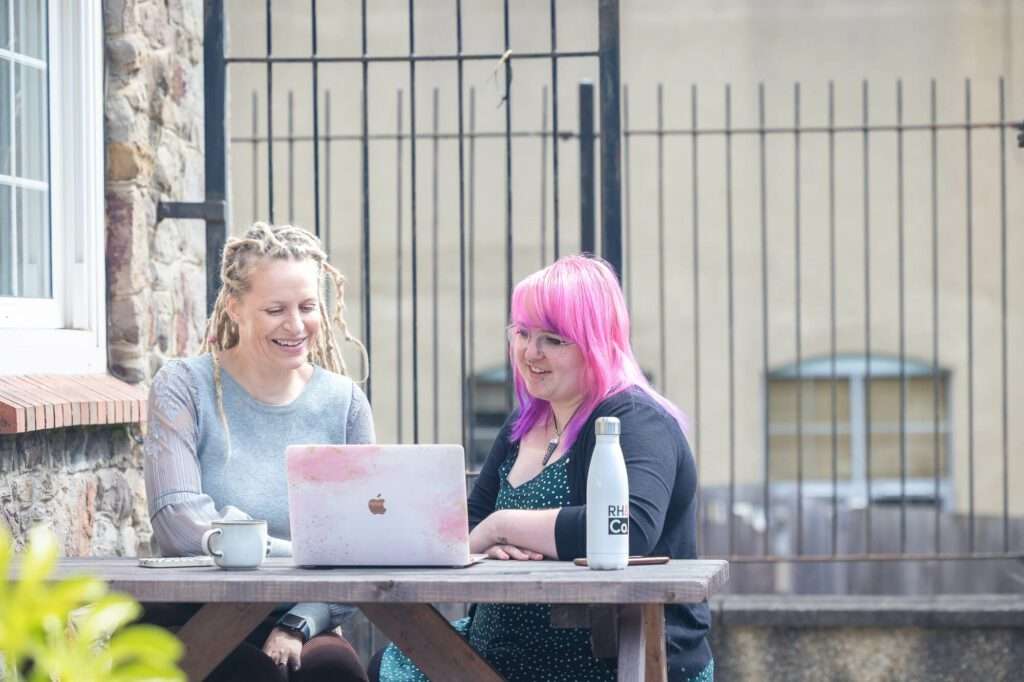
When does a brand need work? And can a brand be engineered?
This is the conclusion to our five-part Brand Roundtable series, based on a conversation between experts with rich experience of creating and curating brands from startup to scaleup, and from idea to acquisition. Here they ask whether brand can be engineered or should emerge naturally – and how you can harness brand either way.
Not every organisation follows the same lifecycle. Many are bootstrapped by first-time business owners, some have funding out of the gate, and others are launched by larger parent companies. Some companies grow one person at a time, others 50 at a time. Some are led by their founders their whole existence, others are entirely reimagined when new leadership arrives.
With such different starting points, and so many directions to evolve in, how do you harness brand? Should you define your brand at the beginning or wait for it to emerge over time? Can a brand be engineered? And if so, how should you go about it?
We took these questions to our roundtable contributors, who teased out the issue:
- Faye Lockier, global communication director at Ultraleap
- Abeed Janmohamed, M&A advisor and founder of Volando
- Nick Sturge MBE, portfolio NED and strategic adviser
- Caroline Macdonald, CEO and PR and marketing specialist at OggaDoon
- Tristan Gillen, growth marketing expert and founder of Growth Division
- Lauren (Stewart) Tack, founder and CEO of Invigorate and angel investor
Can a brand emerge naturally over time?
It’s rare for a brand to be fully formed early in a business journey. Instead, as we explored in our conversation on how much should brand evolve?, it’s worth starting off with what Tristan Gillen described as a ‘minimum viable brand’ – a basic framework that can be flexible while you’re likely to iterate and pivot.
“Throughout your early growth journey you’re going to have to be a little bit reactive with your brand,” says Tristan. “The only solution is to keep your finger on the pulse – always asking: does the brand reflect the stage the business is at.”
At RH&Co, for instance, it took us several years to go from a relatively generalist copywriting agency – writing lots of different types of copy for lots of different types of business – to one with a defined audience and expertise niche.
Today we’re confident in our value proposition – we help expert-led businesses to stand out as authorities in their field – but this emerged gradually because the company itself was still forming, storming, norming, etc. and we couldn’t have taken a shortcut.
However, while brand can emerge over time, there’s no guarantee that it will. Nick says his first engineering business, Motion Media, grew over six years to be worth £270 million, but he attributes this number to the dotcom boom rather than the strength of their brand. Knowing what he knows now, Nick says they would have been a lot more successful if they deliberately refined the brand experience of their product.
Lauren describes how brand can so easily get lost: “If you’re trying to juggle performance, delivery, customer satisfaction, raising cash, hiring and so on, being intentional about your brand across every element of a business is actually really hard to do.”
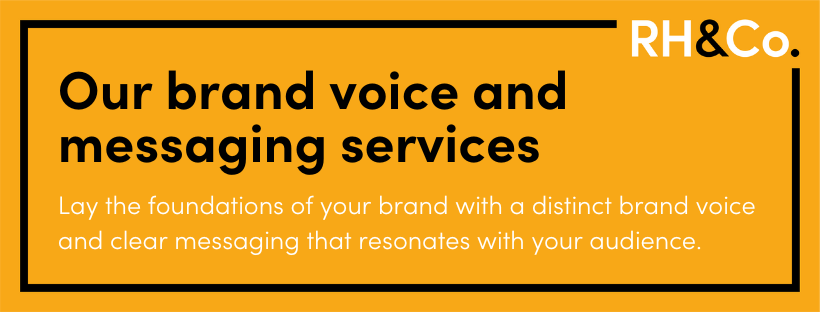
Can a brand be engineered from its inception?
Caroline says that you only need to look at British Gas and Hive to see that a brand can be heavily engineered – designed from the ground up not to embody the vision, mission and values of a growing team, but to capitalise on a market opportunity.
A similar trend can be seen in the finance sector, where companies like NatWest are launching new brands like Mettle to compete with challenger banks. Or in the telecom space, where new alt-nets like Gigaclear and Ogi need to come out swinging to win public trust fast.
This kind of heavily engineered brand still can’t be designed entirely ‘from the top’, however. Eventually, you’ll need to bring more of your people into the brand creation.
“If you don’t involve people in the brand creation, the engineered brand has a shelf life,” says Caroline. “It has limitations because it’s been designed in a way that leaves out the human touch of the people behind it.”
When does a brand need further engineering?
As we explored earlier in our conversation, brand is far more than a visual identity and a strapline, and a lack of brand definition has a very real effect on the kind of customers, employees and investment they can attract.
At RH&Co, we’ve worked with a number of SMEs that have managed to muddle through with a relatively vague brand, but eventually they reach a crux point where their messaging becomes too ineffective for their growth goals. At that stage, they need to refocus and complete some intentional engineering work on their brand.
Brand building is a continuous process but at different times you’ll want to focus on different areas depending on your growth stage and your focus for the coming months and years.
1. When to work on the customer-facing brand
The customer-facing brand is the one that gets you business, the one responsible for lowering your cost of acquisition (CAC) and raising your customer lifetime value (LTV). It’s also what will help you to occupy a new market or penetrate a saturated one.
During the early stages of a company’s growth, especially before product-market fit, you’ll want to work more on your overarching brand – defining and communicating vision, mission and values. This will help your product find early adopters, crowdfunders and those who will become the strongest advocates of your brand.
You need to set the culture and get good people in your organisation at the early stages because the first 10 will set the culture for the first 1,000
Lauren (Stewart) Tack, Founder and CEO of Invigorate and angel investor
Later on in the company lifecycle however, you’ll want to invest more in product and verticals branding, which will ‘grow up’ your brand. Faye describes how UltraLeap achieved this: taking their overarching vision, mission and values and working out how to make this translate to their three verticals – XR, touchless experiences and automotives – and subsequently to their audience.
“Product brands need to filter down from the overarching messaging so there’s consistency,” says Faye. “That’s important for UltraLeap because if you take automotives, we’re trying to get our haptics into cars, but our XR products could also help build those same cars – so it all needs to feel part of the same narrative.”
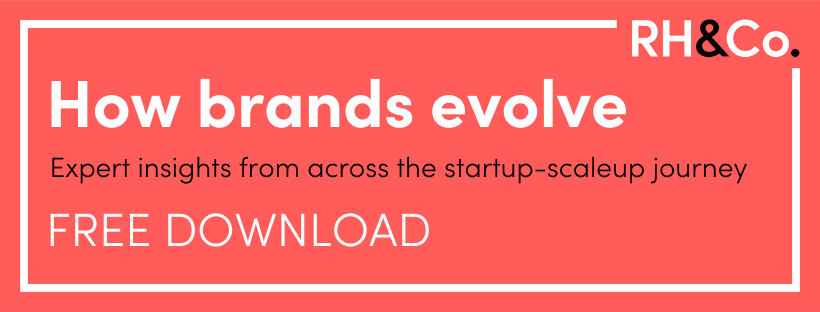
At RH&Co we went through a similar process with the impact investor BBRC. Their mission, vision and values were already refined but, after six years of growth, they needed to ensure these resonated with the three distinct audiences they had acquired – ESG investors, businesses with a strong purpose, and charities/social enterprises.
So we worked closely with the BBRC team to translate their core messaging three ways:
- Purposeful business – “Disrupt more than the market”
- Investors – ”Create more than a financial return”
- Charities and social enterprises – “Create self-sustaining, long term impact”
2. When to work on the employer brand
Companies inevitably need to invest in employer brand before scaling since it will help reduce cost-per-hire and attract the best talent. However, brands can’t afford to wait until the scaling stage before they begin engineering employer brand.
“You want a snowball effect to take place,” says Lauren. ‘You need to set the culture and get good people in your organisation at the early stages because the first 10 will set the culture for the first 1,000 – and great managers will hire great people.”
Employer brand will either be upheld or undone by a company’s culture and values – and vice versa. If your employer brand is effective enough, it help you attract people capable of upholding your culture and values – and you need those people right from the beginning.
You might not invest in the assets at that stage – flashy recruiting videos and so on – but you do need to invest some thought. And that thought needs to continue down the line. A long-standing reputation can help but you can rarely afford to rest on your laurels. You need to keep evolving the brand you’re representing – because the talent market is evolving too.
“When I was learning to be an engineer, an apprenticeship at Rolls Royce was the start to the Rolls Royce of careers,” says Nick. “But then the industry changed, and the company did nothing to change their brand, assuming people would still aspire to work for them based on their history – but a couple of years ago from a talent attraction point of view Rolls Royce was struggling.”
3. Engineering the investor-facing brand
Brand influences investors. To begin with, a minimum viable brand might be all you need to attract the angel investors and seed funding you’re looking for. But as companies enter later funding rounds, they sometimes need to grow beyond their original startup identity.
Lauren says, “When they want to attract investors, startups often need to translate their consumer-facing brand into a more grown up brand. They need to balance their quirky coolness and their innovative edge with having all their ducks in a row – and having bigger conversations in traditional boardrooms with traditional businesses.”
The same goes for brands looking to be acquired – but growing up for investors doesn’t mean losing their identity. Investors are likely aware of the scrappiness that lies beneath any image of sophistication.
“Let’s not kid ourselves,” says Abeed. “Startups and growth businesses have to be scrappy and commercial and/or agile. They need to make money and they will effectively do everything they possibly can do to try and make money. On the surface, they might try to look like gliding swans, but underneath the surface they are scrapping.
“So when it comes to finding that balance – presenting a good brand to investors and consumers – that’s where having the right advisors on board can help, they can help you to have those bigger conversations with investors while maintaining your edge.”
And that’s a wrap on our brand roundtable series. If you’re interested in diving deeper into brand and brand building, check out our thoughts on brand building vs. lead generation or how to explain a complex value proposition in a nutshell.
Back to hompeage


